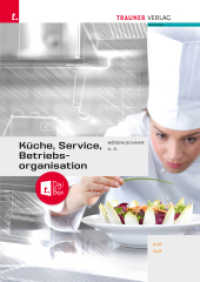- ホーム
- > 洋書
- > 英文書
- > Transportation
Full Description
This book extends the discussion begun in previous two volumes, expanding the focus to include the economic, educational, medical, and human factors that shape the future of space exploration. Reflecting the broad and interdisciplinary scope of the XLVI and XLVII Academic Space Conferences, this book highlights innovative research on mission design, innovation management, and astronaut-centered engineering.
In particular, this focuses on trajectory planning, lunar logistics, economic models for the space sector, STEM education for space careers, and biomedical studies on life support and long-duration missions.
Reflecting on technical and socio-economic aspects of space exploration, this book is invaluable for a broad audience of researchers, educators, and industry leaders seeking insight into the evolving intersection of technology, policy, and human systems in space science.
Contents
Choosing a Rational Configuration of the Tethered System Designing for Stabilizing the Motion of a Circumlunar Space Station.- Optimization of Minimum Thrust Trajectories with Free Boundary Conditions between Earth and Lunar Orbit.- Analysis of Motion Control Strategies for the Collocation of Geostationary Satellites in the Vicinity of the Standing point +95 Degrees.- The Deployment of a Space Net System for Providing the Contact Studies on the Asteroid Surface.- Reducing Costs of a Characteristic Speed of an Interplanetary Flight Using a Deep Space Maneuver.- Determination and Analysis of Possible Flight Schemes to Sedna in 2029-2037.- Using Low Orbits as a Means of Reducing the Cost of Space Technology.- Justification of Safe Pressure Maintenance Regimes in Spacecraft in Case of Accidental Depressurization.







